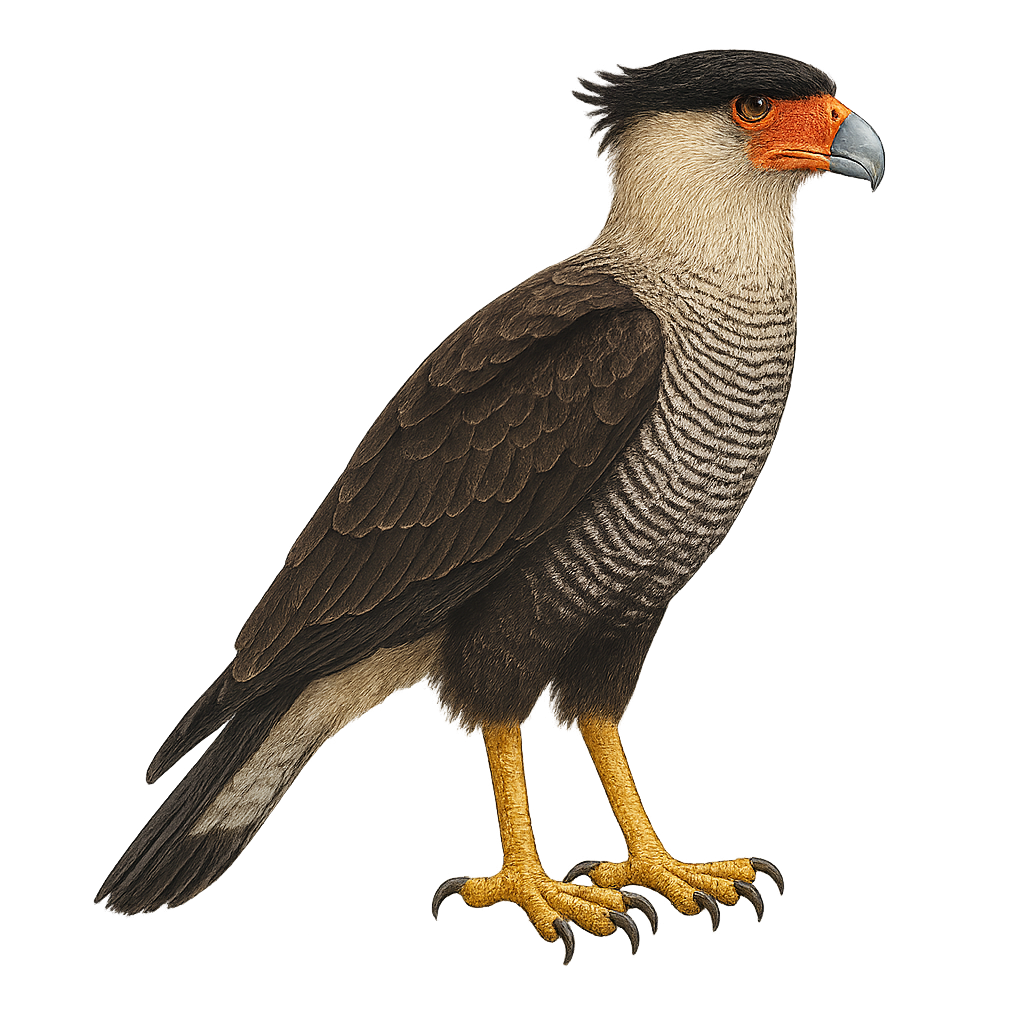Your wildlife photography guide.
Explore the southern caracara in detail, study its behavior, prepare your shots.
Where to observe and photograph the southern caracara in the wild
Learn where and when to spot the southern caracara in the wild, how to identify the species based on distinctive features, and what natural environments it inhabits. The WildlifePhotographer app offers tailored photography tips that reflect the southern caracara’s behavior, helping you capture better wildlife images. Explore the full species profile for key information including description, habitat, active periods, and approach techniques.
Southern Caracara
Scientific name: Caracara plancus

IUCN Status: Least Concern
Family: FALCONIDAE
Group: Birds
Sensitivity to human approach: Tolerant
Minimum approach distance: 10 m
Courtship display: August to October
Incubation: 28-32 jours
Hatchings: September to November
Habitat:
grasslands, savannas, agricultural areas
Activity period :
Primarily active during the day, with peak activity in the morning and late afternoon.
Identification and description:
The Southern Caracara, also known as the Carancho, is a medium-sized raptor belonging to the Falconidae family. It is easily recognizable by its bare head and dark brown plumage with lighter shades on the neck and chest. This opportunistic scavenger primarily feeds on carcasses but does not hesitate to hunt small animals or steal food from other birds. It is mainly found in open grasslands, savannas, and agricultural areas of South America, particularly in Argentina, Brazil, and Uruguay. The Southern Caracara is a diurnal bird, often seen soaring at low altitudes in search of food. Although often solitary, it can be seen in small groups around carcasses.
Recommended lens:
400 mm – adjust based on distance, desired framing (portrait or habitat), and approach conditions.
Photography tips:
To photograph the Southern Caracara, it is advisable to use a 400mm lens or longer to capture detailed images from a distance. Look for it in open grasslands or agricultural areas where it is often foraging. Be patient and discreet, as although it is tolerant, it may fly away if you get too close. Take advantage of the golden hours in the morning or afternoon to benefit from soft, warm light that will highlight the details of its plumage.
The WildlifePhotographer App is coming soon!
Be the first to explore the best nature spots, track rutting seasons, log your observations, and observe more wildlife.
Already 1 429 wildlife lovers subscribed worldwide

